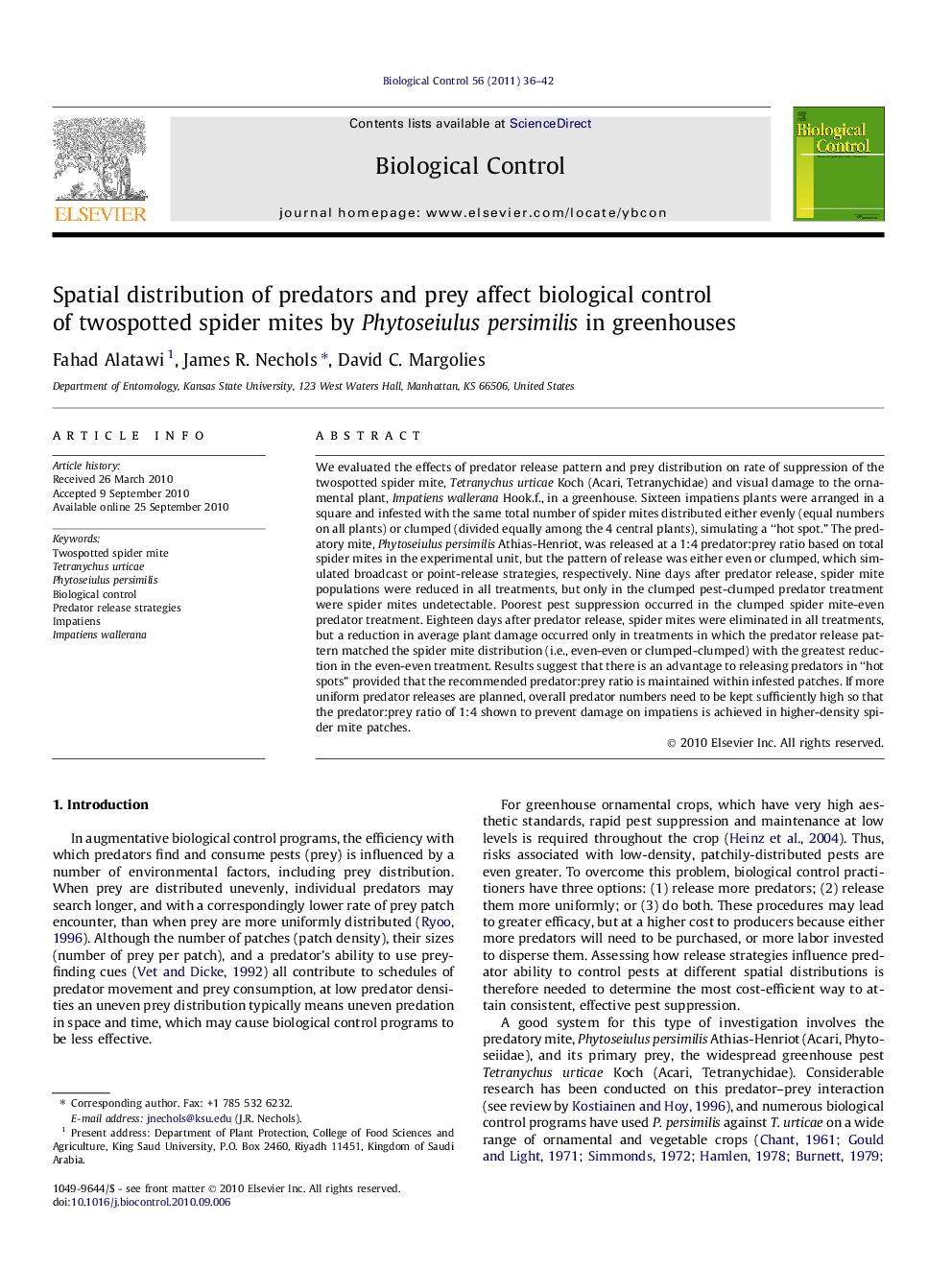| Article ID | Journal | Published Year | Pages | File Type |
|---|---|---|---|---|
| 4504403 | Biological Control | 2011 | 7 Pages |
We evaluated the effects of predator release pattern and prey distribution on rate of suppression of the twospotted spider mite, Tetranychus urticae Koch (Acari, Tetranychidae) and visual damage to the ornamental plant, Impatienswallerana Hook.f., in a greenhouse. Sixteen impatiens plants were arranged in a square and infested with the same total number of spider mites distributed either evenly (equal numbers on all plants) or clumped (divided equally among the 4 central plants), simulating a “hot spot.” The predatory mite, Phytoseiulus persimilis Athias-Henriot, was released at a 1:4 predator:prey ratio based on total spider mites in the experimental unit, but the pattern of release was either even or clumped, which simulated broadcast or point-release strategies, respectively. Nine days after predator release, spider mite populations were reduced in all treatments, but only in the clumped pest-clumped predator treatment were spider mites undetectable. Poorest pest suppression occurred in the clumped spider mite-even predator treatment. Eighteen days after predator release, spider mites were eliminated in all treatments, but a reduction in average plant damage occurred only in treatments in which the predator release pattern matched the spider mite distribution (i.e., even-even or clumped-clumped) with the greatest reduction in the even-even treatment. Results suggest that there is an advantage to releasing predators in “hot spots” provided that the recommended predator:prey ratio is maintained within infested patches. If more uniform predator releases are planned, overall predator numbers need to be kept sufficiently high so that the predator:prey ratio of 1:4 shown to prevent damage on impatiens is achieved in higher-density spider mite patches.
Graphical abstractFigure optionsDownload full-size imageDownload as PowerPoint slideResearch highlights► Phytoseiid predators foraged for spider mite prey on 16-plant arrays of bean plants. ► Spider mite suppression depended on spatial distribution of both predator and pest. ► Pests reduced fastest when predators and pests were both clumped on the same plants. ► Poorest pest suppression when initial pest and predator distributions mismatched. ► Broadcast predator release against clumped pests will require higher predator numbers.
